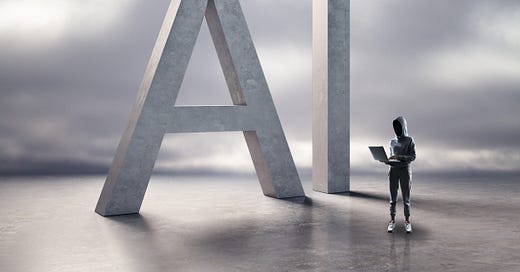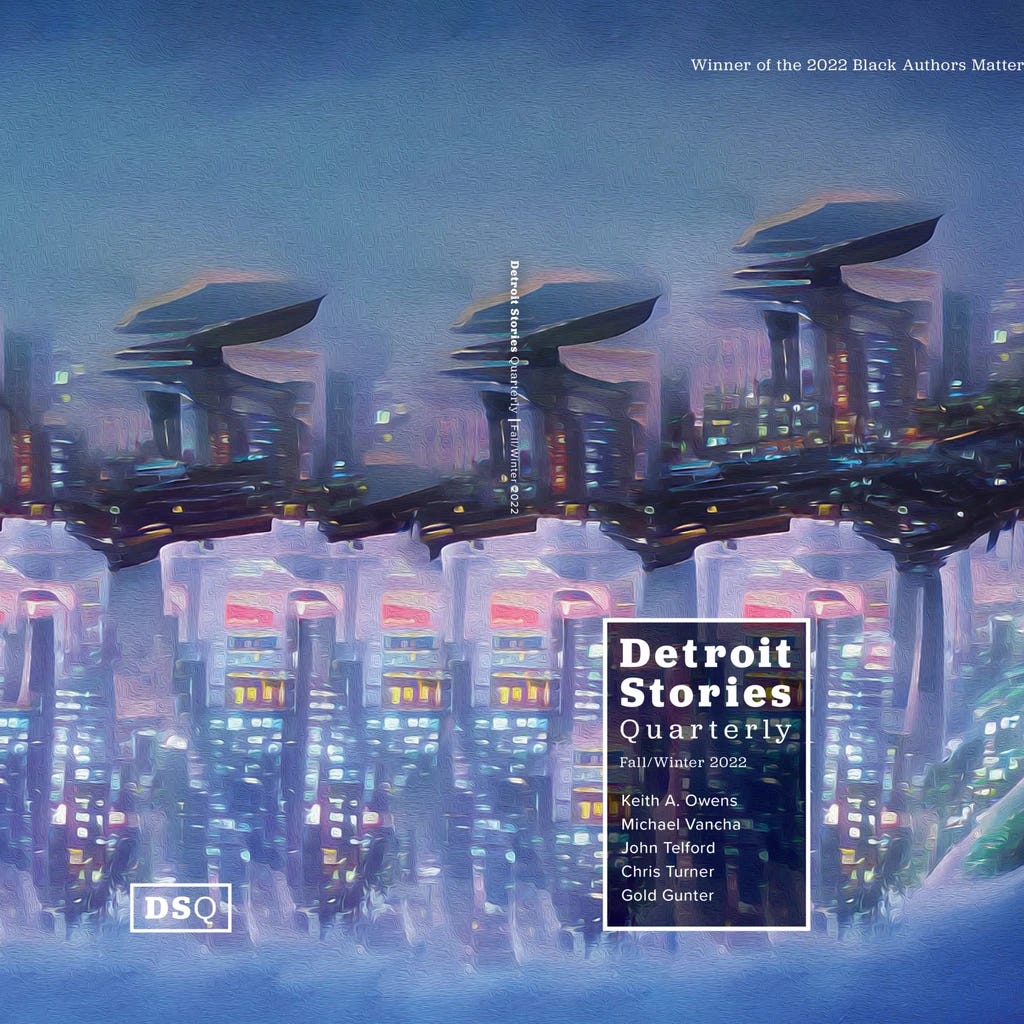The Early Effects of AI on Education
We've been using computer assistance longer than we realize
Issue #268 Education March 1, 2023
Please make sure to view and act on the important information at the end of this article to help support “We Are Speaking.” Thank you!
As many of you know, I am a retired educator of all grades from PreK through university level, primarily English and Language Arts and middle and high school.
When I started teaching, we didn't have computers or even calculators. My students did research using the encyclopedia set in my classroom and the school and public libraries.
I remember teaching my students how to rewrite the information they found during their research into new documents, and then editing their drafts before submitting their final copy.
Their homework was done on lined paper with pencil or pen, written in manuscript or cursive.
By junior high, they could turn in their work in typed form.
When I was in high school, we were still using abaci and slide rules and writing out our equations by hand.
I remember buying my first calculator from JCPenney for $35.00. It did four operations: addition, subtraction, multiplication, and division.
I bought my first PET computer in the mid-80s. I first had to insert the 5.5-inch disk for the operating system, then take that disk out and insert the disk for the word processing system.
I started using email consistently in the late 1990s, I think.
I used dial-up modems at least until the early aughts.
I remember teaching my 4th-grade students that correct spelling was very important because when they typed something in the URL search bar on the classroom computers, the spelling had to be exact to find what they were looking for.
Today, my iPhone 14 that I can hold in my hand has more computing power and functionality than an entire room of computers from the 1970s.
My point is, in the 50+ years since I first started teaching there have been more technological advancements than in the past few centuries.
Now, many people are worried about the emergence of Artificial Intelligence in our everyday lives and in our educational system.
As artificial intelligence (AI) increasingly enters the mainstream, its potential implications for education are becoming more apparent. Some believe that AI could eventually render many traditional educational practices obsolete, while others believe it will simply enhance and supplement existing teaching methods.
Regardless of the eventual outcome, it is clear that AI will have a profound impact on education in the years to come.
How will AI affect classroom learning in the future - should writing skills still be taught, or will machines be able to do it better and faster?
AI has been gradually making its way into classrooms, and writers and instructors across disciplines are beginning to consider the implications of AI in teaching.
AI could drastically impact the way writing skills are taught in the future, because AI may be able to create online texts at a rate much faster than a human writer, with considerably fewer errors.
At the same time, AI is unlikely to master complex topics as humans understand those topics: AI tools can only offer support for limited tasks like grammar checks and identifying misspelled words.
Ultimately, teachers must remain an integral part of helping students learn about writing. AI may help accelerate their studies, but teachers will still be essential in guiding them through more complex processes like learning originality and critical thinking.
This is exactly what I did with my students before anyone had electronic gadgets of any kind.
Should art still be taught in schools, or will AI be able to create more realistic and lifelike images and sculptures?
As artificial intelligence technology continues to develop and become more sophisticated, it is becoming increasingly difficult to distinguish the difference between computer-generated art and that of the human hand.
Back in my early years of teaching, the schools had actual art teachers and art classes that my students attended once per week.
Until a couple of decades ago, cartoons and animated movies were meticulously drawn frame by frame.
Now artists use CGI: computer-generated imaging.
Cars used to be designed first with clay models from hand-drawn images, which were then translated into actual models. For the past few decades, however, cars are designed on computers, using CAD (Computer Aided Design) software.
Again, new technology has changed many industries just in the past 20-30 years or so.
In a future where machines are able to generate lifelike images or sculptures, what will be the value of art education in schools? Will AI render this type of educational instruction obsolete because it could create better results?
How will AI change what is considered "real art," or have computers and software already started down that path?
How can we mitigate plagiarism with the rise of AI - should we focus on teaching students how to find and use sources properly, or should we invest in technology that can detect copied content automatically?
As AI continues to grow and evolve, one of the questions we must ask ourselves is how we will mitigate plagiarism in classrooms.
Plagiarism has existed since people started writing. People copied the writing of others using handwriting or typing. Plagiarism is nothing new.
Many educators are divided on whether the emphasis should be on teaching students how to research and use sources ethically or by investing in technological solutions that can detect any copied content automatically.
Although both approaches have their own merits, it is difficult to deny that technology has the potential to work faster and more effectively than traditional methods.
After all, AI is now capable of recognizing patterns faster than humans, so it stands to reason that investing in this kind of technology could prove very beneficial in curbing plagiarism.
Whichever direction we take towards fighting plagiarism, however, students must still be educated on why plagiarism is wrong and why they must always credit those whose work they cite in order.
These are just a few of the questions that need to be addressed as AI starts to enter the classroom more and more. What other issues do you think need to be considered?
In conclusion, AI already provides amazing new opportunities in the classroom to simplify and streamline tasks. But as Spiderman's "Uncle Ben" said: With great power comes great responsibility.
As educators, we must be aware of the potential implications AI can have on the teaching environment, including how it could affect writing skills and art classes.
Furthermore, by understanding how AI can contribute to plagiarism and other issues, as well as providing solutions for preventing them, we will be able to make sure that technology is used responsibly in classrooms from kindergarten to college.
We must ask ourselves: what kind of future do we want our students to grow up in? How might AI be able to shape it positively?
What are your thoughts about AI and the use of Chatbots?
Let us know in the comments or start a dialogue in the chat (for paid subscribers).
No intrusive ads or annoying popups ever! Instead, please see the important information below and at the bottom of this post. That’s how we grow and sustain this publication. AND, please keep those “Likes” and comments coming! Thanks!
There is new lower pricing for the paid levels at as little as $5.00/month or $50/year!
Help us to grow our We Are Speaking Substack!
Don’t Forget! If you have the W.A.S. app for iOS and Android, you can listen to each article by clicking the little headset icon. You can also participate in the W.A.S. Chat (for paid subscribers only).
There are many benefits to using the W.A.S. app, including the ability to listen to our posts and podcast episodes straight from the iOS or Android app.
You can always leave any questions in the comments or email us.
Free posts are available for 7 days after publication. Adjust or upgrade your subscription to the paid level here. Pay less than 14¢ per post for the 36 monthly articles and podcast episodes. Thank you for your financial support!
Read the award-winning Detroit Stories Quarterly SciFi Anthology by Keith Owens, et al., with special guest authors. Click before to get a copy.
Our new eBook for independent authors and creative and solo professionals is published! Are you a creative professional or independent author looking to market and brand yourself successfully? Then this is the book for you! Learn practical and targeted marketing and branding strategies that will help you stand out from the competition. Click below to get your copy for just $4.99.
Check out the Global Creative Community Branding and Marketing Academy (GCC BMA) offering online courses networking opportunities, and one-on-one and group coaching for independent writers and creative and solo professionals.










